Equivalent Fractions Worksheets Grade 3
Are you a grade 3 teacher or parent looking for worksheets to help your students or child practice equivalent fractions? Look no further! We understand the importance of providing engaging and effective resources to aid in learning, so we have compiled a selection of grade 3 equivalent fractions worksheets.
Table of Images 👆
More Other Worksheets
Kindergarten Worksheet My RoomSpanish Verb Worksheets
Cooking Vocabulary Worksheet
DNA Code Worksheet
Meiosis Worksheet Answer Key
Art Handouts and Worksheets
7 Elements of Art Worksheets
All Amendment Worksheet
Symmetry Art Worksheets
Daily Meal Planning Worksheet
What are equivalent fractions?
Equivalent fractions are fractions that have the same value, even though they may look different. This means that they represent the same amount or quantity. To find equivalent fractions, you multiply or divide both the numerator and denominator by the same nonzero number.
How can you determine if two fractions are equivalent?
Two fractions are equivalent if they represent the same value. To determine if two fractions are equivalent, you can simplify both fractions by dividing the numerator and denominator by their greatest common factor. If the simplified fractions are the same, then the original fractions are equivalent. Alternatively, you can cross multiply and see if the two resulting products are equal, as this method also shows if the fractions are equivalent.
What is the relationship between the numerator and denominator in equivalent fractions?
In equivalent fractions, the numerator and denominator are related by the same ratio or proportion. This means that if you multiply or divide both the numerator and denominator of a fraction by the same nonzero number, you will get an equivalent fraction. This relationship ensures that the value of the fraction remains the same even though the numbers in the numerator and denominator change.
Can fractions with different numerators and denominators be equivalent?
Yes, fractions with different numerators and denominators can be equivalent if they represent the same value. This occurs when you simplify or scale up/down the fraction to find an equivalent form. For example, 2/4 and 1/2 are equivalent fractions because they both represent half of something.
Can a fraction be equivalent to a whole number?
Yes, a fraction can be equivalent to a whole number. This occurs when the numerator of the fraction is divisible by the denominator, resulting in a whole number. For example, the fraction 6/3 is equivalent to the whole number 2.
How do you simplify fractions to find equivalent fractions?
To simplify fractions and find equivalent fractions, you need to divide the numerator and the denominator by their greatest common factor (GCF). By simplifying in this way, you can reduce the fraction to its simplest form without changing its overall value. If you continuously divide both the numerator and the denominator by their GCF, you will find equivalent fractions that represent the same quantity in a different form.
Can fractions with different whole numbers in the numerator and denominator be equivalent?
Yes, fractions with different whole numbers in the numerator and denominator can be equivalent. This is because fractions are equivalent if they represent the same value even though the actual numbers in the fraction may be different. For example, 2/4 and 4/8 are equivalent fractions as they both represent the same portion of a whole.
Are equivalent fractions always written in the same form?
No, equivalent fractions are not always written in the same form. Equivalent fractions represent the same proportion of a whole, but they can be expressed in different forms. For example, 1/2 and 2/4 are equivalent fractions, but they are written in different forms.
What is the importance of using equivalent fractions in mathematical calculations?
Using equivalent fractions in mathematical calculations is important because it allows us to compare and combine fractions easily. By finding equivalent fractions, we can make different fractions have the same denominator, making addition, subtraction, multiplication, and division much simpler. This helps us to manipulate fractions accurately and efficiently, especially when solving complex problems involving fractions.
Can you provide an example of two equivalent fractions and explain how you know they are equivalent?
Certainly! An example of two equivalent fractions is 2/4 and 1/2. These fractions are equivalent because when you simplify 2/4 by dividing the numerator and denominator by their greatest common factor, which is 2, you get 1/2. This shows that both fractions represent the same value, even though they are written differently.
Have something to share?
Who is Worksheeto?
At Worksheeto, we are committed to delivering an extensive and varied portfolio of superior quality worksheets, designed to address the educational demands of students, educators, and parents.





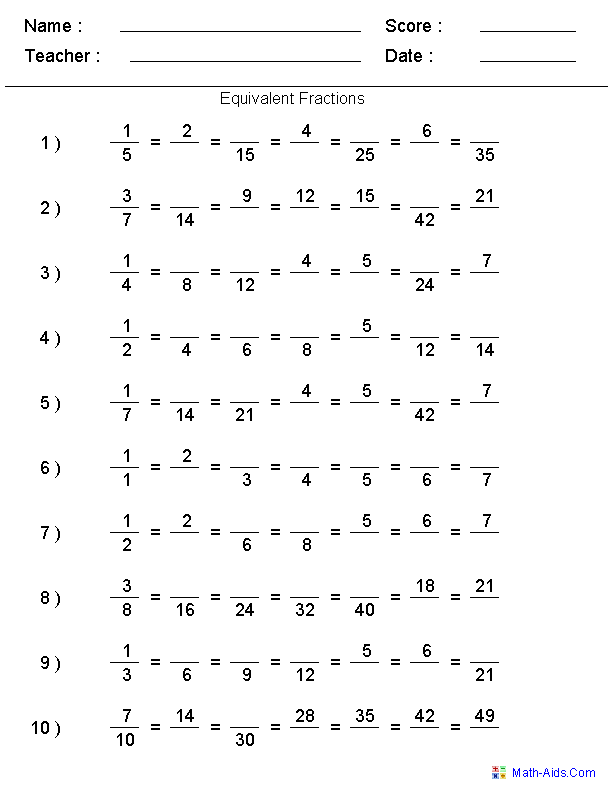
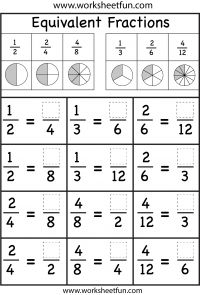
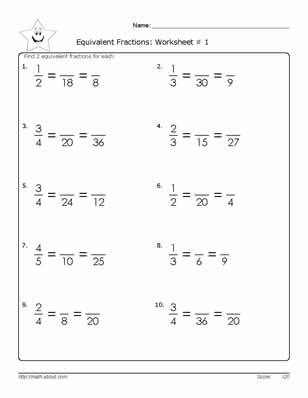
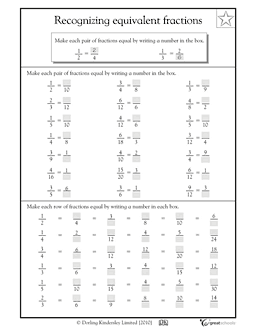
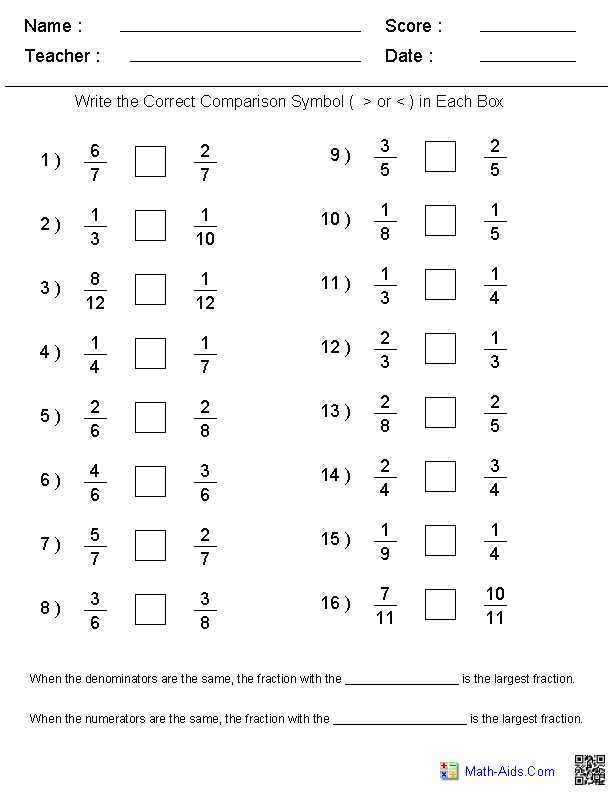















Comments